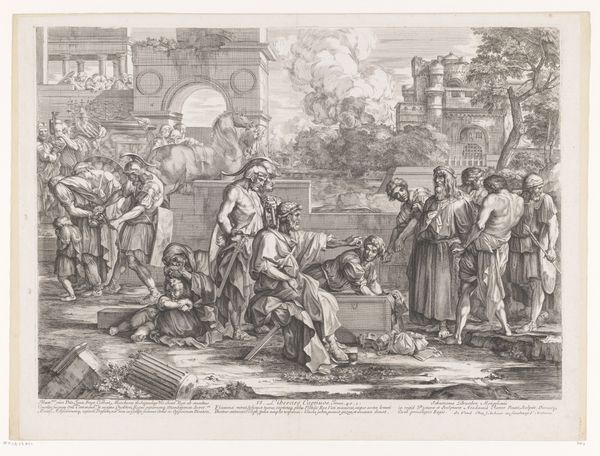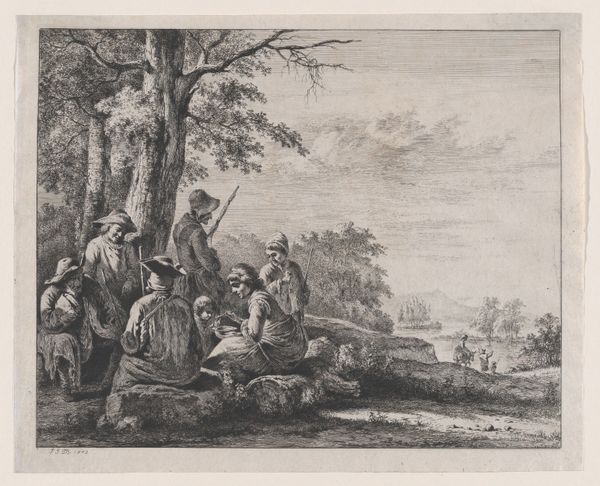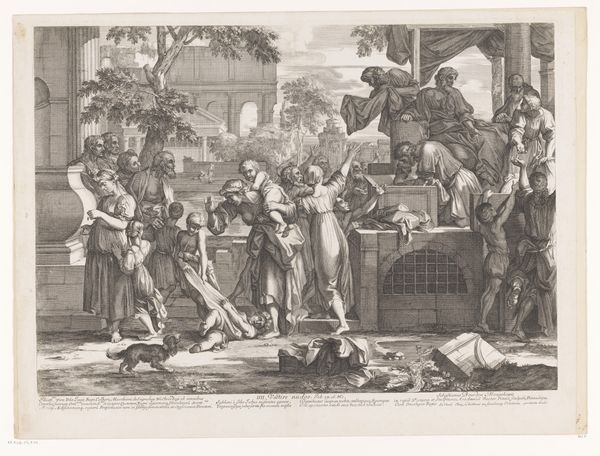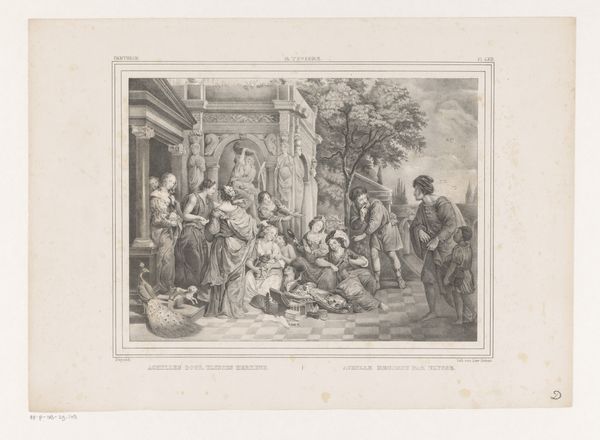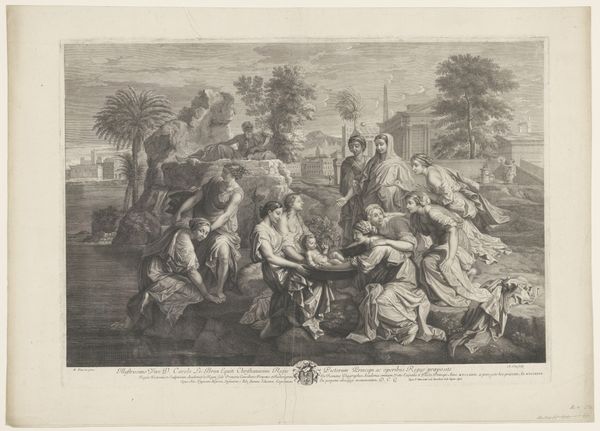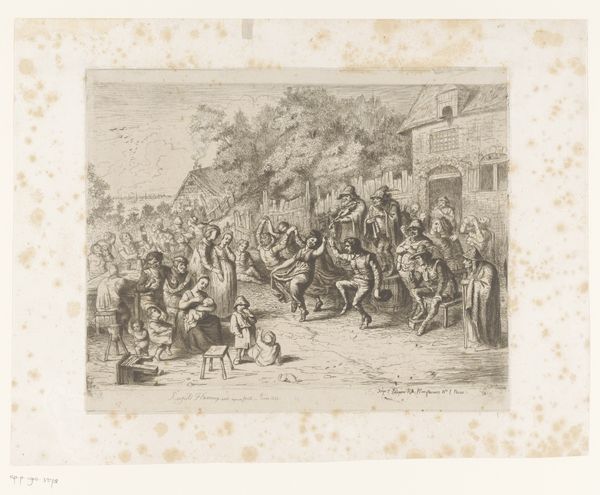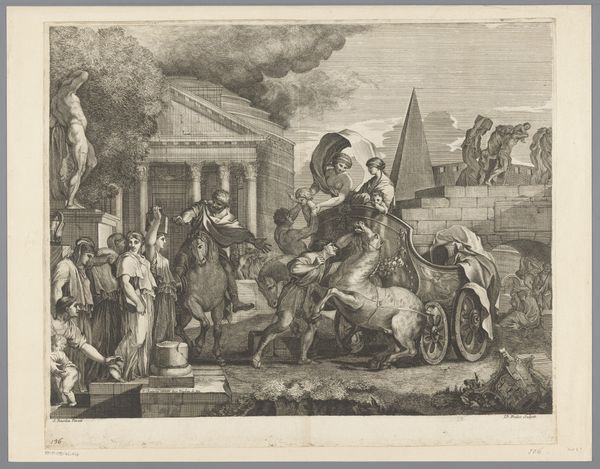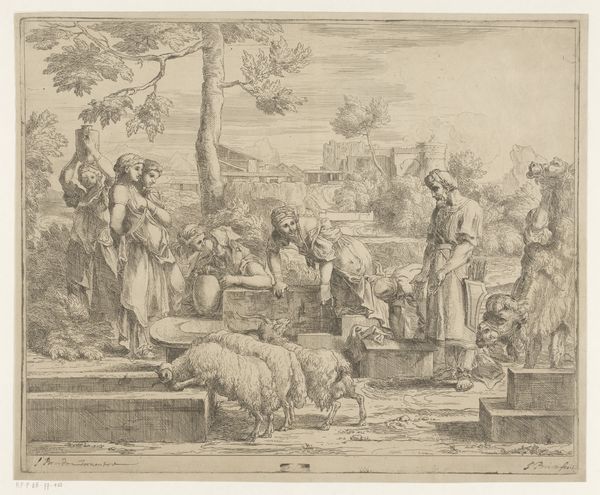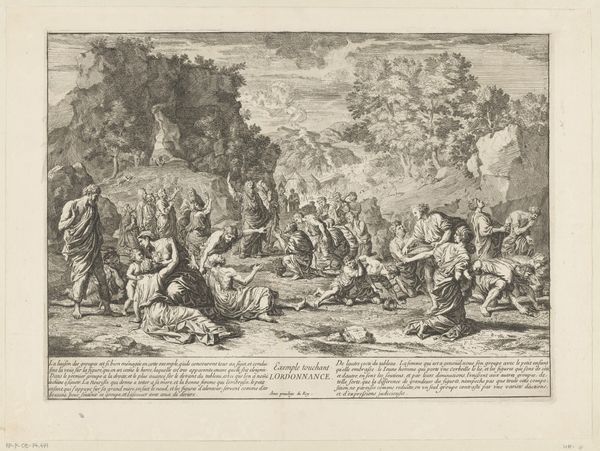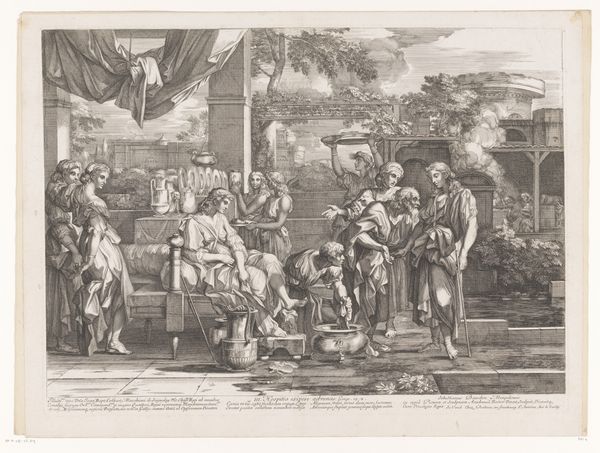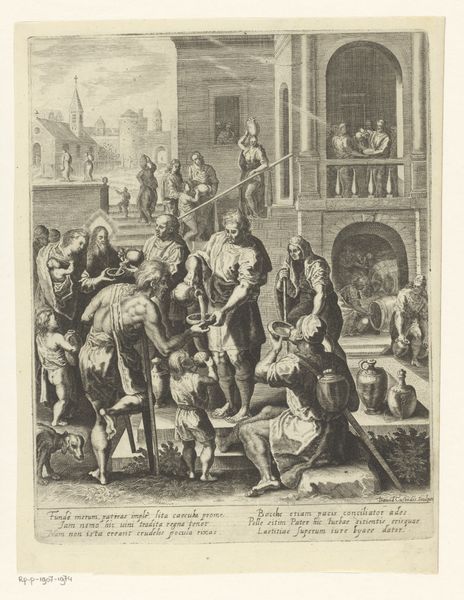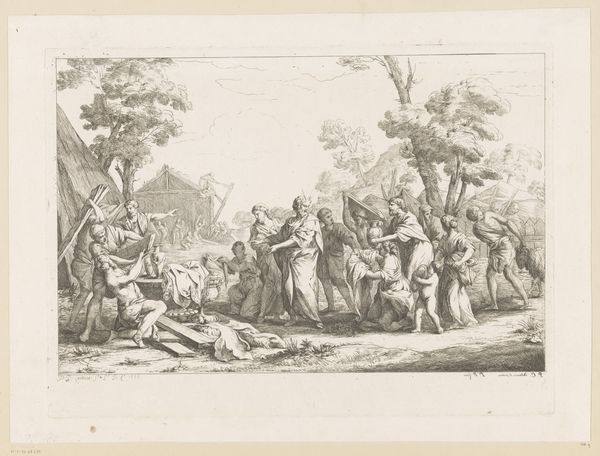
print, engraving
#
narrative-art
#
baroque
# print
#
old engraving style
#
landscape
#
figuration
#
genre-painting
#
history-painting
#
engraving
Dimensions: height 430 mm, width 581 mm
Copyright: Rijks Museum: Open Domain
Curator: This is Sebastien Bourdon's engraving, "Voeden van de hongerigen," dating roughly between 1626 and 1671. It’s currently held here at the Rijksmuseum. Editor: It has such a dramatic, yet unsettling feeling about it. The stark contrasts and the figures seemingly caught in different states of being... it speaks to a deep human experience, a visual metaphor of societal struggle and perhaps biblical narratives. Curator: Bourdon created this within a very specific artistic climate. We see clear Baroque characteristics – the dynamism, the elaborate composition. However, his genre and history painting incorporated classical elements too. This engraving allows us to see how those social responsibilities translated into visual rhetoric. Editor: Precisely. This "Feeding the Hungry" scene resonates with our own era of heightened consciousness around food security and equitable distribution. What does it mean to create art addressing hunger, positioning it within narratives of obligation and power? Is there, in the contrast between the fed and unfed, some statement about social responsibility? Curator: That reading certainly speaks to a shift from earlier charitable views. Bourdon was working during a time when institutions of social support were in flux. Looking at this piece within that context, we might read the almost classical calm amongst some figures as the establishment versus a chaos, an urgent hunger amongst others. Editor: Right, the composition sets up this compelling binary – almost a judgement. Are the individuals being aided empowered, or are they framed as purely helpless, requiring outside assistance? How does this representation potentially reinforce unequal power structures, positioning one group as benevolent providers and another as perpetual recipients? Curator: The architecture even seems to play a role. Classical ruins are offset by what appears to be a bakery and bustling work. Editor: Food preparation. A compelling observation on systems versus pure, idealized "charity." There is almost a mechanical coldness within it all. It’s complex, engaging work. Curator: Definitely, it's one of Bourdon’s prints that demands us to think critically about its visual language, it historical background, and of course, our contemporary social narratives. Editor: I’ll certainly be rethinking assumptions around altruism after seeing this, I hope our listeners will too.
Comments
No comments
Be the first to comment and join the conversation on the ultimate creative platform.
